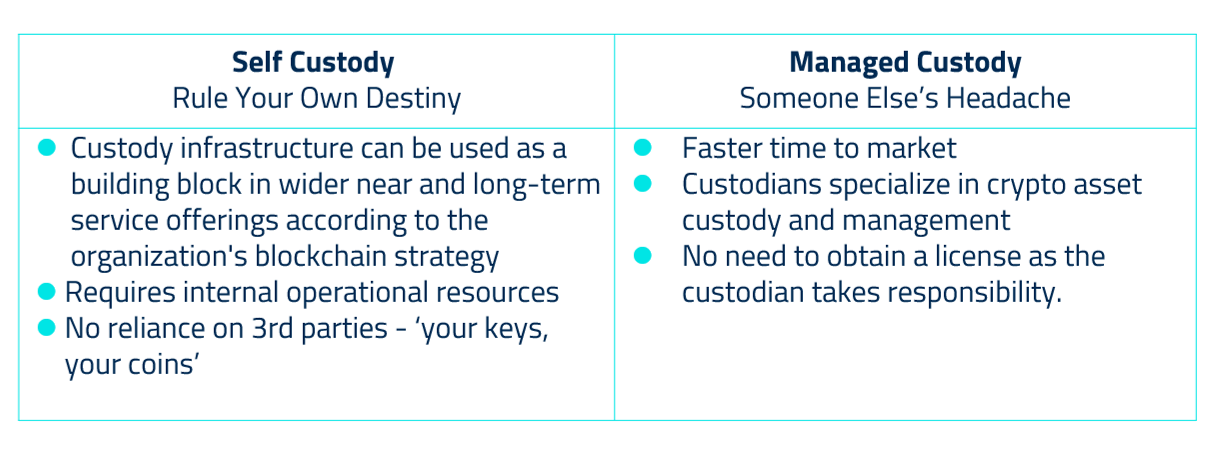Our Blog and Media Coverage

Hunker Down and Build for the Next Boom
- Articles

How can institutions survive and thrive through the crypto winter?
After a strong 2021, the crypto market has lost $2 trillion from its all-time high in November 2021. While some predict a quick rebound, others expect a slowdown of at least a year. Indeed, the last crypto winter occurred in 2017-2018, but experts taut several critical differences between this downturn and the latter:
- Macro-economic winds are blowing – mounting recession, increased interest rates, and even a plunge in the NASDAQ and other international markets, are among a few indicators of change.
- Institutional players have evolved – the 2017-2018 winter was mainly propelled by retail investors. Since then, large ‘Wall Street’ players and a growing number of institutions have entered the market, wielding more power – but also having more at stake.
- The domino effect – for example, despite the thousands of currencies listed on Coinmarketcap, BTC, ETH and Tether continue to dominate trading (with 65% of the market).
There is a palpable tension among crypto newcomers who have yet to experience a turbulent crypto bear market. In fact, some suggest that the downturn caught many large players off guard. For blockchain veterans, this is yet another wave in the ocean.
Agility is key
Darwin talked about survival of the fittest, but perhaps ‘survival of the agile (or most adaptable)’ would be more appropriate. During the COVID-19 outbreak, those organizations which were able to quickly adapt to the changing market conditions were able to take advantage of the situation and ‘up’ their market dominance. Those who found the transition difficult were often wiped away by the tide.
The crypto market is no different. In this case, those who have gone through the crypto cycle before know that a bear market opens a window of opportunity for institutions to further their crypto adoption, research the possible solutions and build the infrastructure to take advantage of the next market boom. At the end of the day – cryptocurrency is here to stay.
Build for the next boom
Financial institutions invest millions to protect their IT infrastructure and assets from theft, however, protecting digital assets requires additional considerations. As with other new technology deployments, institutions need to take the time to better understand blockchain’s capabilities, how to manage digital assets, and how to deploy them. When the next boom arrives, institutions will also need to successfully deal with requirements of scale and lightning fast response times. All capabilities they can start learning and implementing now, so they can have zero time to market when they want to get into production.
Whether it is institutional-grade security, agility, compliance, or often a composite of these and other requirements. The process of finding, testing, and implementing a solution varies from institution to institution – but what is very similar amongst all our clients, is the need to test and ensure that the solution meets their specific needs and requirements. Not only for today, but for the foreseeable future. The typical procurement process can take upwards of a year or more, depending on the due diligence, the organization, and their processes.
Here are just some of the considerations when choosing a custody solution:
Self or managed custody?
One of the first decisions an institution needs to make is whether to manage the digital assets themselves or outsource the management to a third party (a.k.a. custody-as-a-service). While working with a custodian may seem enticing, because it transfers the onus of security onto another party, it comes with some downsides, such as limited services or exposure to custodian risk.
If Self Custody, what type of solution is right for you?
The options can be paired down into 2 distinct categories: Hot wallets and Cold wallets.
Cold wallets typically come in the form of a hardware or ‘air-gapped’ storage device. Cold wallets are considered safer because when they are ‘off-line,’ they are not connected to the internet. The benefit most cold wallets provide is their relative security. Cold wallets, like vaults, are primarily used for custody or for low-frequency, high-risk transactions and interacting with smart contracts or staking functions.
Hot wallets, by definition, are connected to the internet and hence vulnerable to attacks. To mitigate risks, these hot wallets use more advanced technologies such as multi-sig or MPC (which has become the industry standard) – yet both have the security of 2 or 3 hot wallets combined. Their benefits include remote operation and automation. Hot wallets, like ATMs, are better suited for high-frequency, low-risk transactions.
In both cases, according to the anatomy of crypto transactions, most available wallets need to connect to the internet at some point in order to enable the transfer of funds. This connectivity is their single point of failure, and that’s why they cannot be 100% secure. To learn more, read our article on the 5 myths of cold wallets.
Support and usability considerations
Custody, albeit important, is only part of the solution. While retaining your crypto in a secure-custody solution, you can also generate new revenue streams with your assets. Offering custody as a service is but one of the options for institutional players. Other revenue generating opportunities lie in activities like tokenization and NFTs, staking, trading and DeFi.
For example, the Decentralized Finance (DeFi) ecosystem is expanding fast. Powered by smart contracts, DeFi is shaping up as a dominant force that could, in the long run, transform the way the larger financial world operates. Having general smart contract support enables customers and partners to instantly integrate their custodial services with any DeFi protocol, including, but not limited to, those based on the ERC-20 standard, with zero time to market and no extra R&D.
Moreover, understanding the support the solution has for various cryptocurrencies is of great importance. Some solutions, like the GK8 platform, support thousands of tokens and protocols, out of the box, making cold staking, tokenization, and access to DeFi available from day one. So, whether you are looking for custody, new revenue streams, or a combination of both, GK8 has the right solution for you.
To learn more about GK8’s unique solutions, click here.





